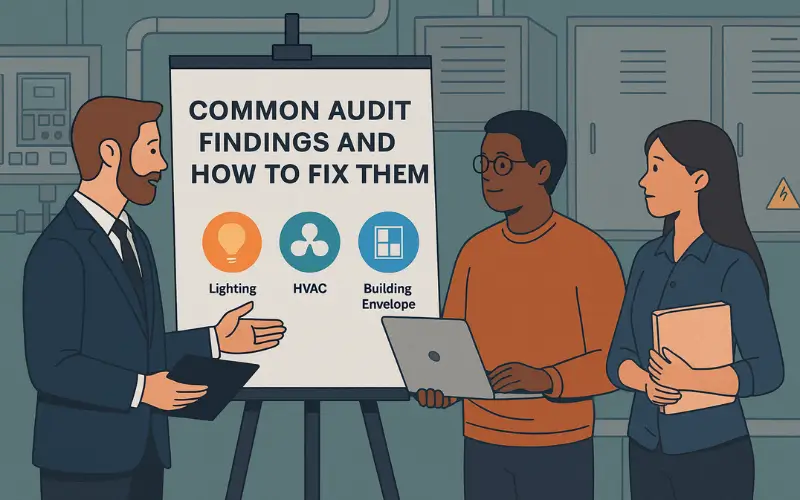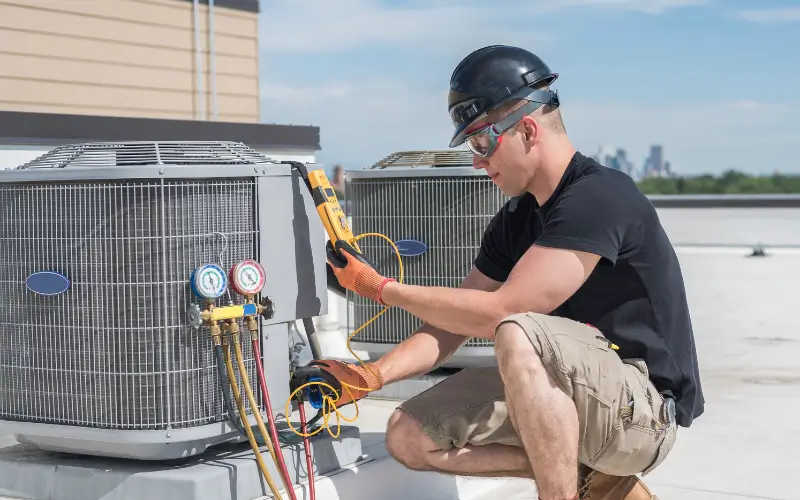In the fast-paced and highly competitive garment industry, even the smallest inefficiencies can translate into significant costs. One of the most overlooked yet energy-intensive systems in a garment factory is the compressed air system. Used across various processes—from powering sewing machines and fabric cutters to cleaning and pneumatic tools—compressed air is often considered “free,” but in reality, it can be one of the most expensive utilities if not managed properly.
A compressed air audit is a structured, data-driven assessment designed to uncover inefficiencies, energy waste, and potential risks in your air system. According to industry estimates, up to 30–50% of compressed air is wasted due to leaks, poor system design, or inappropriate usage. For a garment factory that relies heavily on compressed air for automation, production, and cleaning processes, these inefficiencies can significantly affect both operating costs and environmental impact.
This blog post provides a comprehensive compressed air audit checklist tailored specifically for garment factories. Whether you’re an energy manager, maintenance head, or factory owner, this guide will walk you through the entire audit process—step by step—so you can identify losses, fix inefficiencies, and optimize performance with confidence.
Let’s begin by understanding the fundamentals of a compressed air audit and why it’s an essential practice for modern garment manufacturing.
Understanding Compressed Air Audits
Before diving into the checklist, it’s important to understand what a compressed air audit actually is and why it plays a vital role in garment factories.
What is a Compressed Air Audit?
A compressed air audit is a systematic evaluation of your entire compressed air system—from the air intake at the compressor to the point of use on the production floor. The audit involves gathering performance data, identifying leaks and pressure drops, evaluating equipment conditions, and analyzing how efficiently compressed air is being generated, distributed, and used.
Key components typically audited include:
- Air compressors (fixed speed, variable speed, or multi-stage)
- Storage receivers and dryers
- Distribution piping and valves
- Filters and regulators
- End-use equipment (sewing machines, air jets, cleaning guns, etc.)
There are two main types of audits:
- Basic assessment – A visual inspection and manual check for obvious issues like leaks, pressure mismatches, or oversized compressors.
- Advanced audit – Involves using data loggers, ultrasonic leak detectors, flow meters, and power analyzers to collect detailed data over time.
Benefits of a Compressed Air Audit in Garment Factories
In garment factories, compressed air powers multiple essential processes. However, due to fragmented systems, old equipment, and lack of monitoring, many facilities experience substantial energy loss and inflated costs.
Here’s what a well-executed audit can deliver:
- Energy Savings: Leaks, improper pressure settings, and inefficient compressors can waste 20–50% of energy. Audits help reduce this loss dramatically.
- Cost Reduction: By fixing leaks and optimizing system design, you reduce energy bills and minimize unplanned downtime. For example, a single 1/4-inch leak at 100 PSI can cost over $2,500/year in wasted electricity.
- Improved System Reliability: Identifying issues early helps prevent compressor failures, air starvation at critical points, and inconsistent production speeds.
- Compliance & Safety: Garment factories using compressed air for cleaning or material handling must comply with OSHA safety limits (e.g., <30 PSI for cleaning) and maintain reliable pressure for safe operations.
- Productivity Enhancement: Stable air pressure means machines perform optimally, reducing errors and stoppages on production lines.
In short, a compressed air audit is not just a technical activity—it’s a profit and sustainability strategy. With that understanding, let’s move into how to prepare for an audit in a structured and effective way.
Preparing for an Audit
To get the most value from a compressed air audit, especially in a garment manufacturing environment, preparation is everything. Proper planning ensures the audit is accurate, actionable, and minimally disruptive to production. This section outlines what you need to do before the audit begins.
Defining Scope & Objectives
Start by clearly defining the scope of the audit. This helps auditors focus on the right areas and ensures no critical systems are overlooked.
Ask yourself:
- Are you auditing the entire factory or specific departments (e.g., sewing, finishing)?
- Are you including only the compressors and dryers, or also the full distribution network and point-of-use equipment?
- What are your goals—energy savings, pressure stabilization, leak reduction, or safety compliance?
Typical objectives for garment factories:
- Reduce compressed air energy consumption by 15–30%
- Identify and fix leaks >0.5 mm
- Optimize system pressure for consistent machine performance
- Validate safety measures for air-powered cleaning tools
Gathering System Data
Collect all available information about your current compressed air system. This will help auditors understand the baseline and focus on high-impact areas.
Key data to gather:
- Compressor make, model, rated CFM, power (kW/HP), and age
- Air dryer type (refrigerated, desiccant), dew point levels, and maintenance history
- Existing piping layout drawings (if available)
- Historical energy bills and load profiles
- Maintenance logs (repairs, filter changes, dryer services)
- Operating schedules (shift hours, idle periods, production peaks)
Choosing the Audit Type
The audit method depends on your budget, system complexity, and audit goals.
➤ Walkthrough Audit
- Low cost and fast
- Involves visual inspections and basic checks
- Good for small or newer factories with visible issues
➤ Data-Driven Audit
Uses instruments like:
- Power meters (kW usage)
- Flow meters (CFM)
- Pressure loggers
- Ultrasonic leak detectors
- Provides accurate insights into energy usage, system load, pressure drops, and leak volumes
For garment factories running multiple shifts or complex machinery, a data-driven audit is highly recommended. It allows auditors to detect issues that might only occur during peak operation or specific shifts.
Once your objectives are set, system data collected, and the right audit type selected, you’re ready to begin the actual inspection. In the next section, we’ll walk through a detailed, practical compressed air audit checklist designed specifically for the garments industry.
Step-by-Step Audit Checklist
This is the heart of the audit process—a comprehensive, practical checklist tailored to the unique needs of garment factories. Each step focuses on identifying inefficiencies, ensuring safety, and improving performance across your compressed air system.
Site Walk-Through & Equipment Inventory
Start with a visual inspection of the entire system.
Tasks:
- Identify all compressors (base load, trim, backup)
- Note air dryers, filters, receivers, regulators, separators
- Map out distribution piping routes across sewing, finishing, and utility zones
- Identify end-use tools powered by compressed air (e.g., sewing machines, spot cleaners, air guns)
- Check for visibly damaged hoses, loose fittings, or corroded pipes
Operational Data Logging
Collect actual system performance data over 3–7 days, covering all shifts.
Instruments to use:
- Flow meters (CFM) to track demand fluctuations
- Pressure loggers at compressor discharge and key points in the system
- Power meters (kW) to monitor compressor energy use
- Dew point meters to assess air dryness
What to track:
- Peak vs idle usage
- Pressure stability across shifts
- Compressor run time and load/unload cycles
Leak Detection & Repair
Leaks are the #1 cause of energy loss in compressed air systems.
Steps:
Use ultrasonic leak detectors to find inaudible leaks
Inspect:
- Quick couplings
- Valve connections
- Air gun hoses
- Seams in piping across sewing lines
- Tag and document each leak with severity and location
- Repair high-loss leaks immediately; schedule remaining repairs
Pressure & Usage Analysis
Higher pressure increases energy use unnecessarily and damages equipment.
Tasks:
- Identify pressure drop points (>10% drop is a red flag)
- Compare pressure at compressor vs point-of-use
- Adjust regulators to match actual requirements (avoid blanket high pressure)
- Remove or isolate non-essential air users
Air Quality & Treatment Systems
Moisture and contaminants damage equipment and garments.
Checklist:
- Verify dryer function (dew point below 38°C or better)
- Inspect and replace clogged filters
- Drain moisture traps and separators
- Ensure desiccant beds (if used) are active and replaced on schedule
Safety Compliance
Compressed air can be dangerous if misused.
Actions:
- Check that air guns used for cleaning are fitted with pressure regulators and limited to <30 PSI
- Ensure relief valves are installed and functional
- Confirm safety signage and emergency shut-offs are present
- Inspect hoses for wear, secure mounting, and length (to prevent tripping)
Control Systems & Efficiency
Control strategies directly affect energy use.
Audit Tasks:
- Identify type of compressor control (load/unload, VSD, modulation)
- Check for inefficient part-load operation
- Verify if multiple compressors are properly sequenced
- Review KPIs like kW/100 CFM (ideal range: 18–21)
Maintenance & Staff Training
Lack of maintenance and staff awareness are root causes of system waste.
Tasks:
- Review maintenance logs: filters, dryers, compressors
- Check oil levels and belts
- Confirm automatic drain valves work
- Interview operators and maintenance staff about compressed air use
Conduct short training on:
- Leak reporting
- Proper use of air tools
- System shutdown procedures
With these steps completed, you’ll have a rich dataset and real observations to analyze. In the next section, we’ll walk through how to interpret your audit results and turn them into actionable recommendations.
Analysis & Recommendations
After completing the audit, the next critical step is to analyze the collected data and turn it into clear, actionable insights. This section will guide you on how to interpret results, quantify losses, and propose cost-effective improvements for your garment factory’s compressed air system.
Leak Loss Quantification
Leaks can consume 20–40% of your compressed air—this is equivalent to burning money.
How to analyze:
Use flow meter data and ultrasonic readings to calculate air lost per leak (in CFM)
Estimate the annual cost of each leak using:
- bash
- Copy
- Edit
- Leak Cost (USD/year) ≈ CFM × 0.746 × hrs/year × $/kWh ÷ Compressor Efficiency
Example:
If a 5 CFM leak exists, running 6,000 hours/year at $0.12/kWh with a 90% efficient compressor:
- Leak cost ≈ $1,200–1,400/year
Recommendation:
- Prioritize repairing leaks that cost more than $300/year
- Set a routine leak detection schedule (monthly or quarterly)
Energy Consumption & Load Matching
Check if the compressor is sized appropriately.
Red Flags:
- Compressor running at part-load for long periods
- Excessive unloading/load cycling
- VSD compressors not ramping correctly
What to recommend:
- Consider downsizing or adding trim compressors for off-peak use
- Adjust sequencing logic to match actual load profile
- Target a system-specific energy efficiency of <22 kW/100 CFM
Pressure Optimization
Higher-than-needed pressure increases energy use by 1% per 2 PSI increase.
Analysis:
- Compare required tool pressures vs actual system pressure
- Identify areas with major drops (>10 PSI)
- Use pressure loggers across the system to detect bottlenecks
Recommendations:
- Reduce system pressure where safely possible
- Add storage receivers or upgrade piping in pressure drop zones
- Train operators to avoid increasing pressure unnecessarily
Compressed Air Usage Audit
Not all air applications are justified.
Common misuse in garments:
- Air guns used for cleaning garments or tables
- Compressed air powering manual processes that could use electricity
Recommendations:
- Replace air guns with vacuum systems or low-pressure blowers
- Audit end-use tools—switch from compressed air to electric devices where feasible
Dryer & Filter Maintenance
Contaminants like moisture, dust, and oil reduce both equipment life and garment quality.
Analysis:
- Check dew point logs and pressure drops across filters
- Look for signs of contamination on lines or tools
Recommendations:
- Replace clogged filters
- Automate condensate drains
- Switch to desiccant dryers if dew point is consistently above 40°C
Safety & Compliance Check
Findings to look for:
- Air guns over 30 PSI
- Missing pressure relief valves or safety signage
- Leaking hoses creating trip hazards
Recommendations:
- Install OSHA-compliant air guns
- Replace damaged hoses or fittings
- Conduct regular safety audits and train staff
Cost-Benefit Summary
For every recommendation, include:
- Problem identified (e.g., 12 CFM of leakage)
- Annual cost of the issue
- One-time repair or upgrade cost
- Payback period
Example Format:
| Issue | Annual Loss | Fix Cost | Payback Period |
| Leaks in sewing line | $1,800 | $250 | 2 months |
| High system pressure | $2,400 | $0 (regulator adjustment) | Immediate |
Implementation Plan
Create a structured improvement roadmap:
- Immediate (0–1 month)
- Repair major leaks
- Train staff on proper tool use
- Adjust regulators
- Short-Term (1–3 months)
- Install pressure sensors
- Replace filters
- Update maintenance schedule
- Mid-Term (3–6 months)
- Upgrade to VSD compressor
- Redesign piping if needed
- Automate data logging
- Ongoing
- Monthly mini-audits
- Operator awareness campaigns
- Annual third-party audit
Once your analysis is complete, communicate the findings in a clear report, ideally supported by visuals (e.g., pressure trend graphs, leak photos, heat maps). A focused report helps factory leadership justify investments and track ongoing improvements.
Post-Audit Best Practices
Conducting a compressed air audit is only the first step. To ensure long-term efficiency and cost savings, it’s essential to implement sustainable practices that maintain the performance improvements uncovered during the audit.
Establish a Preventive Maintenance Program
A structured maintenance plan prevents issues before they become costly problems.
Key components:
- Weekly: Inspect pressure gauges, listen for audible leaks, drain moisture traps.
- Monthly: Check filters, tighten fittings, test dryer performance.
- Quarterly: Clean intake filters, verify system pressure settings.
- Annually: Calibrate sensors, review system performance data, and conduct a mini-audit.
Train Operators & Technicians
Many compressed air losses stem from improper use or lack of awareness.
Training topics:
- How to detect and report leaks
- Correct use of air tools (no unnecessary blowing or open use)
- Dangers of over-pressurizing machines
- Identifying when air tools can be substituted with electric options
Monitor & Log System Performance
Use sensors and simple dashboards to track air system KPIs over time.
Metrics to track:
- Compressor energy usage (kWh)
- System pressure (PSI) at various zones
- Air flow volume (CFM)
- Dew point and humidity
- Leak rate (as % of total flow)
Set alerts for:
- Sudden pressure drops
- Excessive compressor runtime
- Dryer or filter failure
Implement a Leak Management Strategy
Leaks will inevitably reappear without ongoing vigilance.
Best practices:
- Designate a “Leak Champion” or maintenance team lead
- Use leak tags with dates and severity levels
- Reward teams for leak reduction efforts
- Maintain a leak log and conduct quarterly walk-throughs
Schedule Regular Follow-Up Audits
Even an optimized system degrades over time. Plan for periodic re-audits.
Audit schedule:
- Mini-audit: Every 3–6 months (internal team)
- Full audit: Annually (with external consultant or specialist)
- Post-upgrade audit: After compressor replacement, layout redesign, or major expansion
This ensures the system remains aligned with evolving production needs and energy goals.
Consider Automation & Upgrades
For high-consumption garment factories, consider technology investments:
- VSD compressors for variable demand
- Centralized compressor control systems
- Smart leak detection systems
- Real-time energy dashboards
- Remote monitoring
These upgrades not only save energy but also enhance system reliability and maintenance visibility.
- Make compressed air efficiency part of your factory culture.
- Present findings during staff meetings or energy awareness days
- Publish improvements in internal newsletters
- Celebrate energy-saving milestones
- Set and share annual energy-saving goals
By following these post-audit best practices, your garment factory can maximize the ROI from compressed air audits and create a long-term culture of efficiency, safety, and cost savings.
Conclusion & Final Thoughts
Compressed air is often overlooked in garment factories—but it shouldn’t be. From powering sewing machines and cleaning tools to operating finishing equipment, compressed air touches nearly every part of production. Yet, it also represents a significant hidden cost when misused or poorly maintained.
A compressed air audit is more than a technical exercise—it’s a powerful tool for:
- Reducing energy waste (often by 20–30%)
- Improving machine performance and reliability
- Extending equipment life
- Enhancing workplace safety
- Lowering production costs
This guide provided a step-by-step roadmap to audit your compressed air system effectively—from preparation to execution to follow-up. If implemented correctly, it can lead to dramatic savings and improved productivity without major capital investment.
FAQs: Compressed Air Audit in Garments
Q1. What is the ideal frequency of a compressed air audit in garment factories?
Every 12 months for full audits, with mini audits every 3–6 months.
Q2. How much money can a garment factory save from a compressed air audit?
Savings vary, but typical audits uncover 15–30% energy wastage—often translating to thousands of dollars annually.
Q3. Are all leaks in compressed air systems audible?
No. Most leaks are inaudible and require ultrasonic leak detectors to identify.
Q4. Is compressed air cleaning safe in garments?
It’s risky. OSHA recommends limiting pressure to below 30 PSI and using proper safety nozzles—or switching to vacuum cleaning systems.
Q5. Can I do a compressed air audit in-house?
Yes, a basic walkthrough can be done internally, but data-driven audits with logging equipment provide deeper insights and are best done by specialists.




